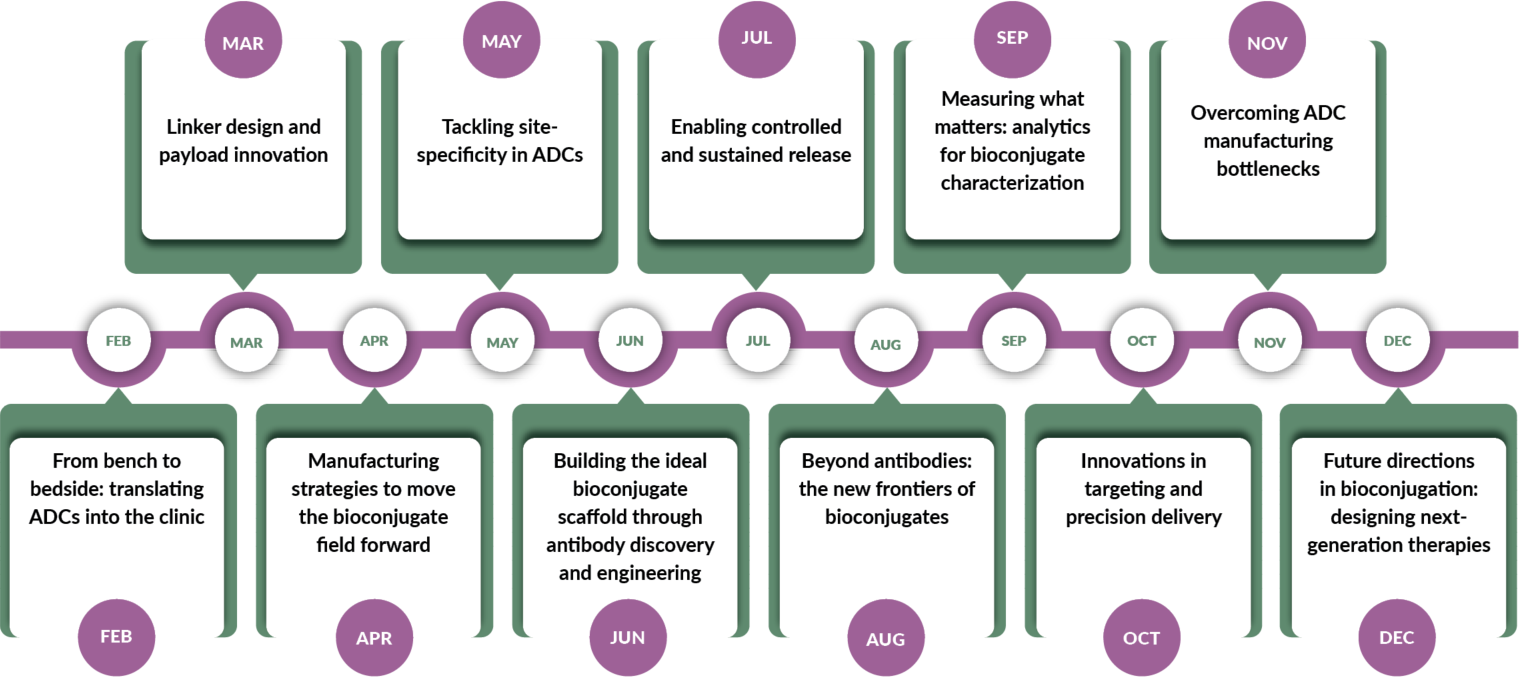February
From bench to bedside: translating ADCs into the clinic
-
Managing atypical toxicity profiles and response timelines to optimize dosing strategies for safety and efficacy
-
Selecting clinical endpoints aligned with new payload mechanisms to demonstrate value
-
Using biomarker-guided patient selection to improve trial outcomes and success rates
-
IND-ready analytical packages to expedite submission timelines
-
Ensuring scalability and scale-up readiness as conjugates advance to late-stage development
-
Bridging into GMP to meet regulatory standards for clinical trial materials
-
Leveraging imaging-based early endpoints for clinical trial acceleration
